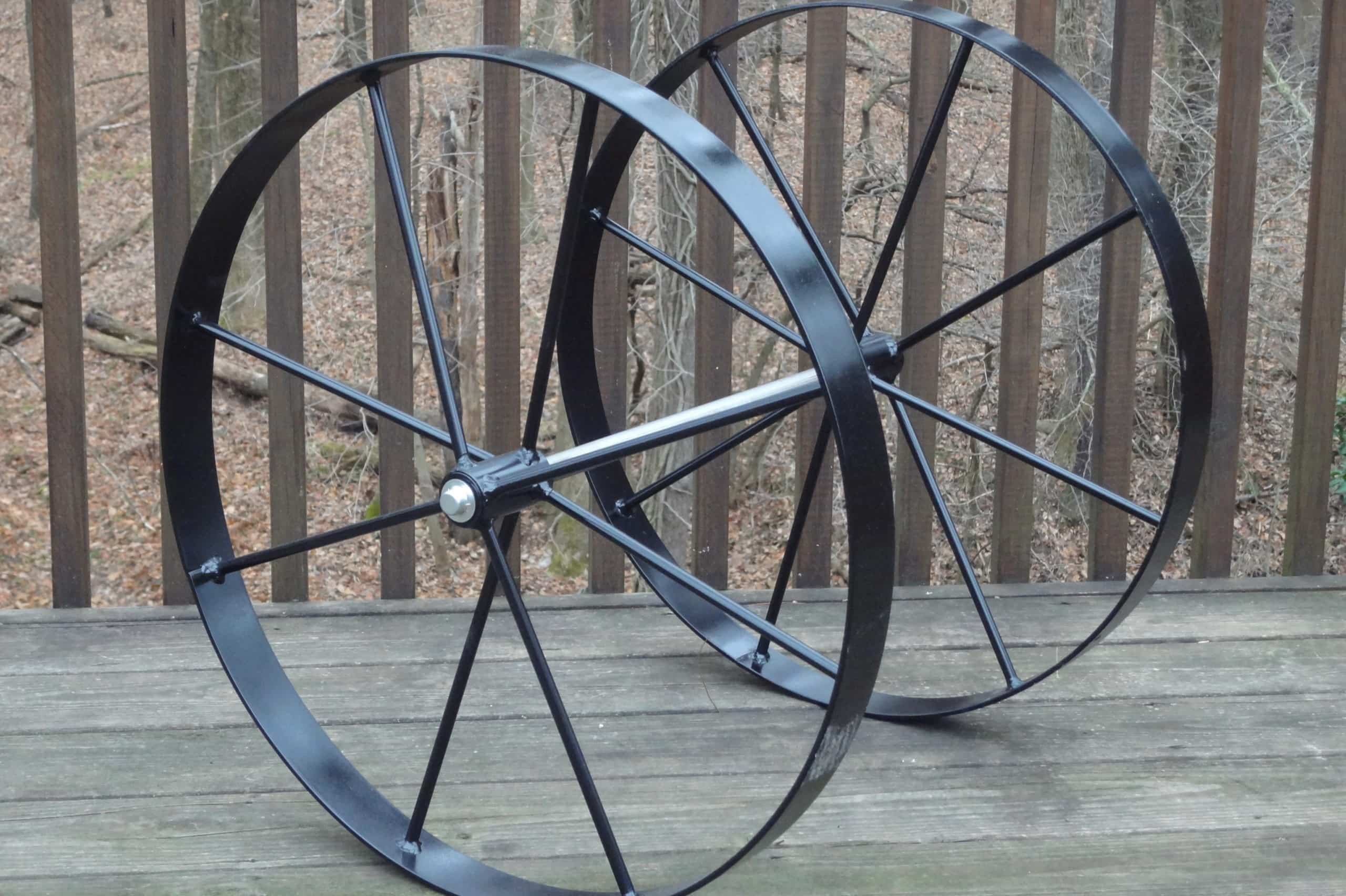
The wheel and axle are one of the most fundamental and ingenious inventions in human history, revolutionizing transportation and mechanical engineering. This simple yet brilliant concept has played a pivotal role in shaping the modern world. From carts and wagons to automobiles and industrial machinery, the wheel and axle have significantly enhanced the efficiency and functionality of countless devices.
In this article, we will delve into 18 fascinating facts about the wheel and axle, uncovering the historical significance, scientific principles, and real-world applications of this remarkable invention. Join us on a captivating journey through time and technology as we explore the wheel and axle from its ancient origins to its indispensable role in contemporary society. Get ready to be amazed by the ingenuity and impact of this timeless invention!
Key Takeaways:
- The wheel and axle, a simple machine, revolutionized human history, shaping transportation and technology. Its timeless relevance reflects humanity’s pursuit of progress and innovation.
- The wheel and axle’s interconnectedness with scientific principles inspires new solutions and technological advancements, showcasing human ingenuity and creativity in shaping the future.
The wheel and axle are one of the six simple machines.
The wheel and axle are fundamental components of many machines and vehicles, serving as a critical element in various mechanical systems. This simple machine consists of a circular object (the wheel) that rotates around a central shaft (the axle). The wheel and axle work together to facilitate the movement of objects with reduced friction, making tasks more manageable and efficient.
The concept of the wheel and axle dates back to ancient civilizations.
The invention of the wheel and axle is a pivotal moment in human history, revolutionizing transportation, industry, and technology. The earliest evidence of wheeled vehicles dates back to around 3500 BCE in Mesopotamia, showcasing the enduring impact of this innovative creation.
Wheels and axles are integral to countless modern-day applications.
From automobiles and bicycles to industrial machinery and pulley systems, the wheel and axle play a crucial role in numerous contemporary inventions and devices. Their versatility and efficiency have contributed significantly to the advancement of various fields, shaping the way we live and work today.
The wheel and axle operate on the principle of mechanical advantage.
By utilizing the mechanical advantage gained from the varying wheel and axle diameters, this simple machine enables the transfer of force over a distance with reduced effort. Understanding this principle is essential for comprehending the functionality and significance of the wheel and axle in different mechanisms.
The wheel and axle facilitate the conversion of rotational motion into linear motion.
This transformative capability allows the wheel and axle to power a wide array of applications, including conveyor belts, gears, and other rotational systems. The seamless conversion of motion underscores the adaptability and utility of the wheel and axle in diverse engineering contexts.
The wheel and axle exemplify the concept of rotational inertia.
Rotational inertia, a property of rotating objects, influences how the wheel and axle respond to external forces and changes in motion. This characteristic is pivotal in designing and optimizing the performance of machines and mechanisms that incorporate the wheel and axle.
The wheel and axle contribute to the efficiency of mechanical systems.
By minimizing friction and distributing forces effectively, the wheel and axle enhance the overall efficiency and functionality of various mechanical setups. This feature is paramount in ensuring smooth operation and longevity in a wide range of applications.
The wheel and axle are pivotal in the function of vehicles.
Vehicles rely extensively on the wheel and axle for propulsion, steering, and stability. Whether in the form of car wheels, train wheels, or aircraft landing gear, the wheel and axle are indispensable components that enable the movement and control of transportation systems.
The wheel and axle are integral to the operation of pulley systems.
Pulley systems leverage the wheel and axle's mechanical advantage to lift heavy loads with reduced effort. This application demonstrates the practical significance of the wheel and axle in facilitating essential tasks across various industries.
The wheel and axle contribute to the operation of gears in machinery.
Gears, fundamental components in many mechanical systems, utilize the wheel and axle's rotational properties to transmit power and control the speed of machinery. This crucial function underscores the pervasive influence of the wheel and axle in diverse industrial and technological domains.
The wheel and axle play a vital role in the function of conveyor belt systems.
Conveyor belt systems, widely used in manufacturing and logistics, rely on the wheel and axle to facilitate the smooth movement of goods and materials. This application underscores the indispensable nature of the wheel and axle in streamlining industrial processes.
The wheel and axle have influenced the development of modern engineering.
The enduring impact of the wheel and axle is evident in the evolution of engineering practices and technological innovations. Their pervasive presence and utility have shaped the course of human progress, contributing to advancements in various fields.
The wheel and axle embody the principles of simplicity and effectiveness in design.
As a simple machine, the wheel and axle epitomize the elegance of efficient design and functionality. Their straightforward yet powerful nature underscores the beauty of harnessing basic principles to achieve remarkable outcomes in engineering and technology.
The wheel and axle have cultural and symbolic significance.
Beyond their mechanical utility, the wheel and axle hold cultural and symbolic significance in various societies, representing progress, movement, and innovation. This symbolic resonance reflects the enduring impact of the wheel and axle on human civilization.
The wheel and axle continue to inspire scientific exploration and innovation.
In the realm of scientific research and technological advancement, the wheel and axle serve as a source of inspiration for developing new solutions and enhancing existing technologies. Their timeless relevance underscores their enduring value in driving innovation and progress.
The wheel and axle exemplify the interconnectedness of scientific principles.
The wheel and axle's operation encompasses a range of scientific concepts, including mechanics, physics, and engineering. Understanding the interconnected nature of these principles is essential for comprehending the broader implications and applications of the wheel and axle.
The wheel and axle represent a testament to human ingenuity and creativity.
The invention and widespread adoption of the wheel and axle stand as a testament to human ingenuity and the capacity for innovation. This enduring symbol of human creativity continues to shape the trajectory of technological advancement and societal development.
The wheel and axle embody the timeless pursuit of efficiency and progress.
From ancient civilizations to modern-day technological marvels, the wheel and axle symbolize humanity's enduring quest for efficiency, progress, and innovation. Their pervasive influence underscores the timeless relevance of this simple machine in shaping the course of human history and shaping the future of technology.
The wheel and axle, as one of the six simple machines, hold a prominent place in the realm of engineering and technology. This fundamental component has left an indelible mark on human civilization, revolutionizing transportation, industry, and innovation. The wheel and axle's timeless relevance and enduring impact underscore the interconnectedness of scientific principles and the testament to human ingenuity and creativity. As we continue to explore new frontiers in scientific research and technological innovation, the wheel and axle stand as a symbol of humanity's timeless pursuit of efficiency, progress, and ingenuity.
Conclusion
In conclusion, the wheel and axle are simple yet ingenious mechanical devices that have revolutionized transportation and countless other applications. Understanding the principles behind the wheel and axle is crucial for comprehending the mechanics of various machines and tools we encounter in our daily lives. From the earliest civilizations to the modern era, the wheel and axle have played a pivotal role in shaping human progress. Their impact extends beyond just transportation, influencing fields as diverse as engineering, physics, and even philosophy. The wheel and axle remain a timeless testament to human innovation and ingenuity, showcasing the remarkable power of simple machines to transform the world around us.
FAQs
What are some common examples of the wheel and axle in everyday life?
The wheel and axle can be found in numerous everyday objects, such as car wheels, bicycle wheels, steering wheels, doorknobs, and even simple items like rolling pins and screwdrivers. These examples illustrate the widespread application of the wheel and axle in various tools and mechanisms.
How does the wheel and axle simplify the movement of heavy objects?
The wheel and axle reduce friction and distribute the force of movement over a larger surface area, making it easier to transport heavy loads. This principle is exemplified in vehicles, where the rotational motion of the wheel and axle enables efficient movement with minimal resistance.
Was this page helpful?
Our commitment to delivering trustworthy and engaging content is at the heart of what we do. Each fact on our site is contributed by real users like you, bringing a wealth of diverse insights and information. To ensure the highest standards of accuracy and reliability, our dedicated editors meticulously review each submission. This process guarantees that the facts we share are not only fascinating but also credible. Trust in our commitment to quality and authenticity as you explore and learn with us.


